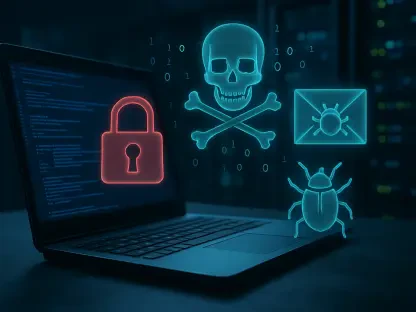Cyber threats have emerged as a significant concern for organizations globally, with phishing, in particular, being a dominant method employed by malicious actors. Companies have traditionally relied on phishing awareness training to bolster employee vigilance against these deceptive tactics. Despite this, the current state of the industry reveals that the expected efficacy of such training might be overestimated. Recent studies have begun to question whether these educational programs genuinely lead to robust protection.
Understanding the Role of Phishing Training
Phishing training plays a pivotal role in organizational defense mechanisms. Threats stemming from phishing are ever-evolving, necessitating dynamic training approaches aligned with broader cybersecurity strategies. Historically, training has served as a key component in mitigating risks, with programs designed to increase employee awareness and responsiveness to potential threats. However, the assumption that human-centric training can provide substantial defense needs reassessment, as educational sessions today may not match the sophistication of modern phishing techniques.
The importance of these training programs lies in their ability to arm employees with the knowledge to recognize and respond to phishing attempts. As threats diversify, companies must examine how these educational strategies have evolved. Initially, education about threats was straightforward, focusing on familiarizing employees with phishing tactics. Over the years, the approach has shifted toward integrating theoretical frameworks into training methodologies, though actual improvements in employee response remain modest.
Analysis of Current Phishing Training Methods
Overview of Present-Day Training Techniques
Modern phishing training employs a range of methods, including interactive and static formats, as well as embedded exercises within workflow systems. Each method aims to engage employees differently, with interactive approaches fostering active learning and static methods providing information for passive consumption. The intention is to enhance training efficacy by employing diverse learning theories, focusing on retention and practical application. However, the success of these methods varies, often hampered by insufficient engagement.
Effectiveness and Outcomes of Phishing Training
Recent studies provide critical insights into the effectiveness of current phishing training programs. Research involving extensive personnel monitoring revealed that traditional training methods result in marginal improvements in the workforce’s ability to resist phishing attacks. These findings challenge the prevailing belief in training as a foolproof strategy, with evidence suggesting that minimal gains in defense capabilities could at times be counterbalanced by drawbacks such as overconfidence among employees.
Challenges in Phishing Awareness Success
The effectiveness of phishing training is impeded by several factors, including low employee engagement, the static nature of content, and infrequent training sessions. Engagement remains particularly challenging, as employees often display disinterest or quickly dismiss training materials. Innovative solutions are needed to make training more compelling, possibly through gamification or real-life scenario applications that enhance interactivity and retention. Furthermore, increasing the frequency of these sessions could cement the acquired knowledge, though the balance must be struck to avoid training fatigue.
Rethinking the Human Firewall Concept
The concept of the human firewall, which emphasizes the critical role of employees in cybersecurity, warrants reconsideration. Relying solely on human-centric defenses may inadvertently neglect the potential of technological solutions, including advanced security layers like hardware-based multi-factor authentication (MFA). Such technological measures offer organizations the opportunity to strengthen their infrastructure in ways that complement, rather than rely entirely on, employee vigilance. An integrated approach balancing both human and technological elements could yield a more comprehensive cybersecurity framework.
Future Directions for Organizational Cybersecurity
Emerging approaches to cybersecurity awareness aim to improve integration and personalization within organizational cultures. Advancements in personalized coaching for employees hold promise for more effective learning, albeit with challenges in scalability and cost. Additionally, embedding cybersecurity practices into the company culture, with incentives tied to security performance, can deepen the importance placed on vigilance against phishing attempts. The ongoing evolution of cyber threats demands that organizations remain adaptive, continuously refining strategies to stay ahead.
Conclusion: Evaluating the Efficacy and Future of Phishing Training
The limitations of current phishing training methods suggest that organizations need to explore beyond traditional strategies. Integrating technology with innovative training solutions can potentially enhance the effectiveness of cybersecurity programs. By redefining the responsibility balance between employees and integrated security systems, organizations can better equip themselves against evolving threats. Future considerations should focus on adapting to change, aligning with technological advancements, and fostering a security-conscious culture, thus ensuring sustained improvements in protecting sensitive information against phishing attacks.









